- Mature height: 2.5 - 8 m (8 - 26 ft)
- Flower: mid - April
- Harvest: Aug - Oct
- Prune: Late winter before bud-burst
Apple Tree Pests, Problems and Growing Tips
Apple trees for sale
Apples are one of the easiest of tree fruit to grow in the UK but it doesn't always go perfectly, these are some of the commonest ailments that might affect your apple trees along with tips to aid your crop
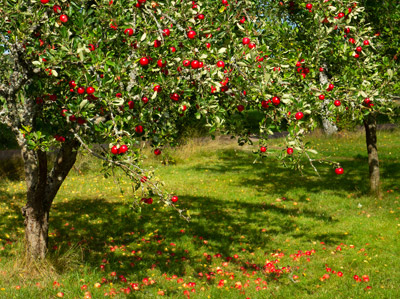
Apple Pests and Diseases The apples drop soon after forming in early to mid summer The most likely cause of this is the "June Drop" (which is not confined only to June), this is where some very small, newly formed apples fall from the tree following a very high pollination success as the tree naturally thins them out so it doesn't have too many later on. If the fallen apples are undamaged, there is nothing to worry about. Apple Sawfly, these cause a maggot hole in the side that is surrounded by sawdust like frass (yes - caterpillar dung has a special name! - frass). Control is by picking and destroying affected fruits before they fall off and the moth escapes. If there have been heavy infestations in the past, then spraying with bifenthrin at the point where the petals fall can be effective. Another symptom of apple sawfly is an irregular brown cork-like "track" across 1/4 or more of the skin of apples as they get larger. Twisted curled or puckered leaves and shoots On inspection you may find hundreds or thousands of tiny green, black or pale colored insects which are aphids. Spray at first sign with a systemic insecticide or your preferred organic alternative. In mid to late summer small holes in fruits and maggots feeding near the core Codling moth. Treatment is by the insecticide bifenthrin in early summer followed by another application about 2 weeks later. The timing of the application can be gauged using pheromone traps to see when the moths are most active. Alternatively if you don't want to apply an insecticide, then pheromone traps can catch enough moths if the trees are reasonably isolated to reduce the number of maggoty apples. You will never really totally control codling moths. Small brown indentations in the skin and fruit of the apples Bitter Pit. Caused by a calcium deficiency, treat by applying lime to the soil and watering in well (takes over a year to have an effect) or spray with calcium nitrate if available. Black/brown scabs appear on the fruits with similar green-grey scabs on the leaves Apple Scab. Fruit may also be small and misshapen, secondarily split and become infected with fungal rots. Venturia inaequalis fungus is the culprit which over winters on stems and fallen leaves. Fallen leaves should be raked up and burnt or otherwise disposed of out of the garden. Spray the tree with a fungicide containing carbendazim or mancozeb, some apple cultivars are resistant. Trees with overcrowded branches are more susceptible, so pruning to open the crown will help, the disease is more prevalent in damp years. Soft brown spots on the apples and white or yellow fungal growths grow on these. Brown Rot. Remove and destroy (NOT on the compost heap) affected fruits, fallen, on the tree or in store. Spray with a general fungicide or benomyl. Patches of dead or dying bark on the branches and trunk Apple canker. Twigs are killed as the diseased bark rings the twig. Cut out and burn affected parts, stumps can be painted with a proprietary canker paint. Puckered regions on apples with a brown corky swelling at the center Capsid bug. Capsids feed on immature fruits so killing some of the developing cells and so there's a region that is not so well developed as the surrounding region, the brown corky growth is a sort of tree allergic reaction to the saliva of the bug. The damage is only skin deep and the fruits are perfectly edible. Severe damage in previous years can be treated by spraying with bifenthrin or pyrethrum at petal fall. The ends of some new shoots are dying back A common ailment particularly in late spring to early summer, new shoots in particular die back for the end 4-6" killing a few leaves in the process, the leaves shrivel up turn brown and die. It is a result of any of a number of fungal infections affecting each shoot individually - i.e. it's not a disease that the tree gets as such, but one that each affected shoot contracts as an individual infection. You could treat the whole tree for the fungal disease, but usually by the time you've noticed it, it's too late and the damage is done. It is not often serious or widespread and the tree shakes it off, the way you shake off a cold. Damaged shoots and leaves can be cut off, or I just leave them a while and then crunch up the dead dry leaves with my hand. If you aren't sure what is wrong or what to do, a big of pampering and gentle convalescence can go a long way, see here. |
Apple trees to buy - More Apples
Apples are grafted onto a rootstock which determines their ultimate size, with the grafted portion being the particular variety of apple. Suckers may be produced from below the graft junction which should be removed as seen.
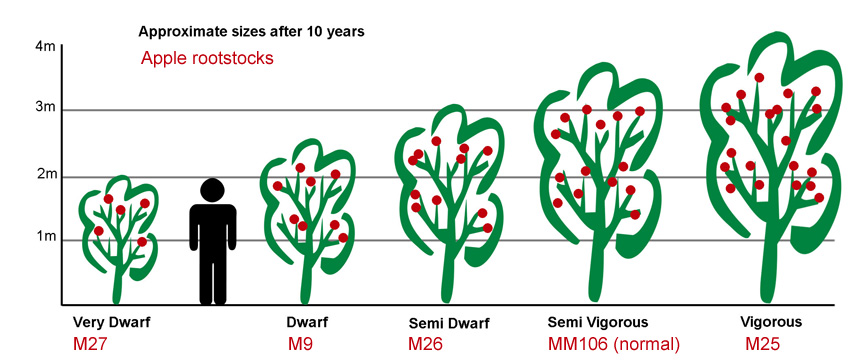
Q. Can I grow an apple tree from a pip?
A. Yes you can, but in I wouldn't bother. If you buy a named apple tree, you get a grafted named variety on a rootstock that determines the tree's size, you're buying a "pedigree". If you grow from seed you're growing a mongrel, while mongrels might be great dogs, they're no so great when they're apple trees.
The most likely thing to happen is that you'll get a large vigorous tree that has so-so fruit, less likely you might get a poor or good tree. So you might as well pay a small price over the lifetime of the tree, (less than a pound a year) to get something that is pre-determinedly well worth having. A seed grown tree generally won't flower for at least 5 years - considerably more than a named grafted variety. If you've the space, time and inclination, it might be fun and you might even equal the luck of retired London brewer Richard Cox, who in 1825 grew a seed from a "Ribston Pippin" into "Cox's Orange Pippin" one of the all time great apples. You may however have noticed that it happened in 1825 and there's no other similar story from the last 200 years to match it.
Q. There are lots of strong vertical shoots growing from my tree, is this a problem?
A. This is the usual response of a mature tree to having too much wood removed in one go - to produce a mass of "water shoots". The shoots are best left to reach at least 1-2ft in length and then removed in stages over months at least if not a couple of years, leaving only enough to replace what has been removed. If they are removed too quickly when too small, the tree simply makes a load more.
Q. My trees crop heavily some years, but then produce little or nothing the year after, why is this?
A. Your tree has got into the habit of "biennial bearing". This means that in the first year it puts so much effort into producing a large amount of fruit, that it needs a year off to recover and build its strength back up.
The answer is to thin out the fruit in early-mid summer. A rule of thumb here is to leave one fruit per leaf area the size of your hand, but this is not easy to gauge, especially when the fruits are concentrated in some places and not found at all in others. Remove damaged, crowded, very small, malformed, diseased etc. fruits leaving only the best to develop, you need to be a lot more ruthless than you think, probably at least half of all small fruits can be removed.
Q. Why have my apples have split their skins?
A. Brown shallow splits occur in the fruit which may heal over with a corky layer. This is most likely caused by an erratic water supply. The split occurs when the tree has a sudden supply of moisture after a period of drought, the sudden growth splits the fruit which hasn't grown for some time. Regular watering and a good mulch to retain soil moisture is the answer.
Copyright 2000 - present. All Rights Reserved | Privacy Policy Statement

 Cox's
Orange Pippin, widely regarded as the tastiest of all
apples
Cox's
Orange Pippin, widely regarded as the tastiest of all
apples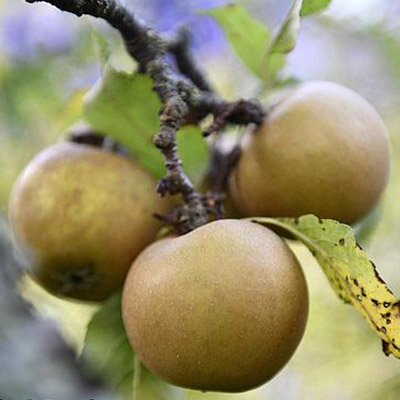 Egremont
Russet, eating apple
Egremont
Russet, eating apple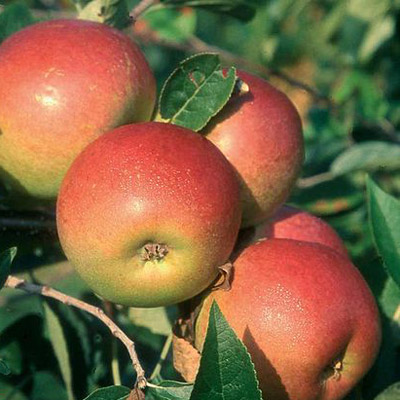 Laxton's
Superb, old fashioned dessert apple
Laxton's
Superb, old fashioned dessert apple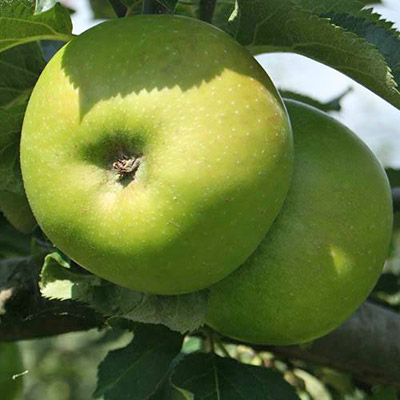 Bramley cooking apple
Bramley cooking apple